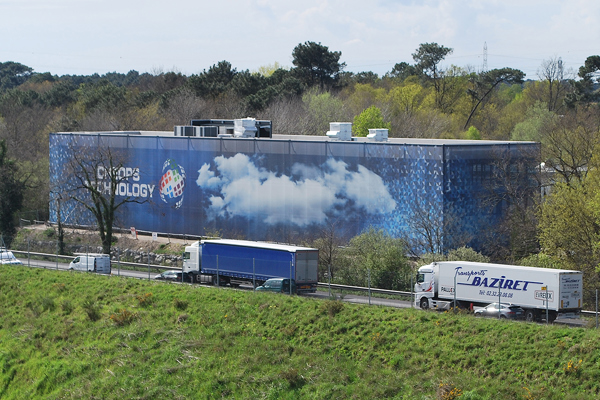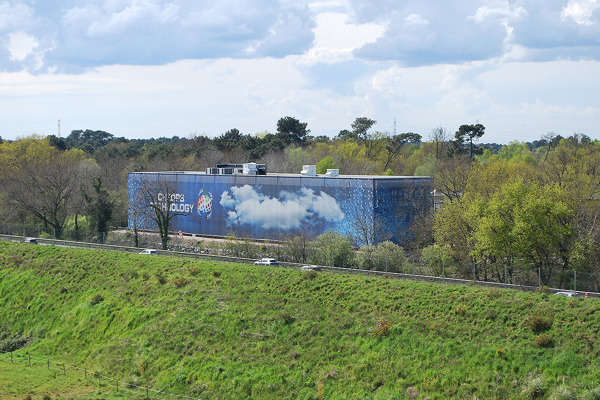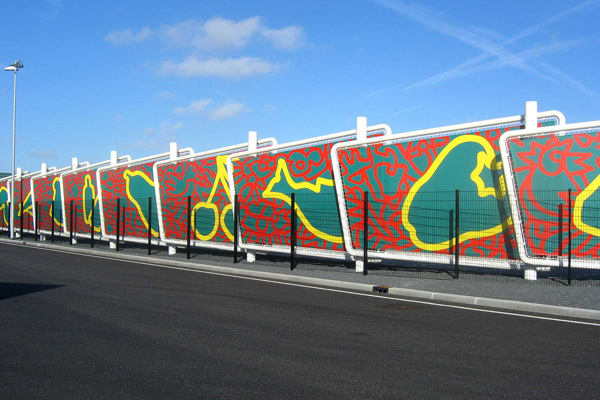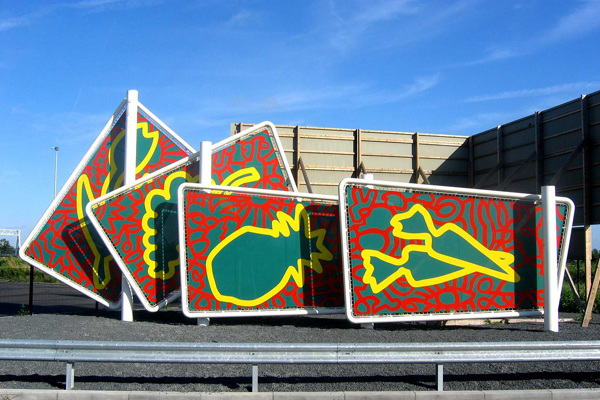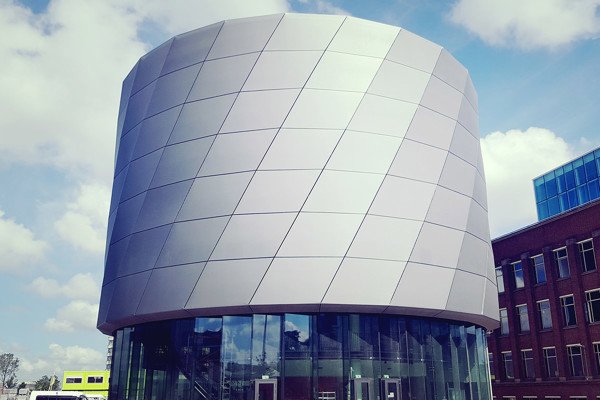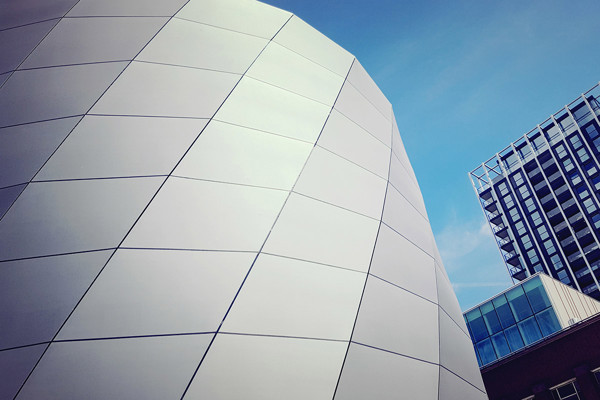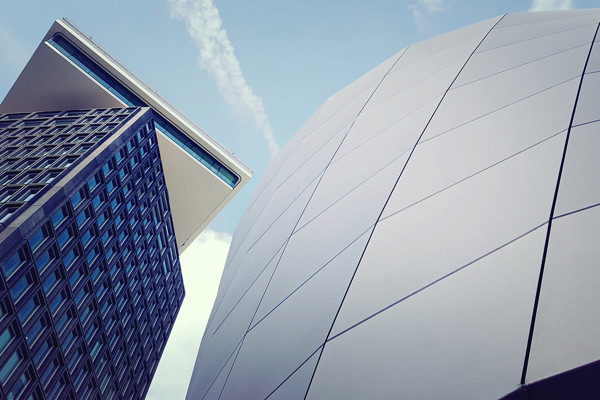- Architecture
- Industry
- Leisure
- Technology Center
- uk >
- Architecture >
- Textile facades >
- Fabric Mesh Facade FAQ
Fabric Mesh Façade FAQ
Is every building suitable for a fabric mesh facade?
Fabric mesh cladding is always "the second skin" of a building whose construction consists of hard building materials such as wood, stone, steel, glass or a combination of these. By using smart profile systems on which Buitink Technology mounts the fabric mesh cladding, almost any facade can be fitted with fabric mesh.
Buitink Technology develops its own profile systems to attach and tension textile facades on buildings.
Does a fabric mesh facade have maximum dimensions?
The welding techniques used by Buitink Technology make it possible to produce the fabric mesh cladding either as small panels or as very large facade systems. Large facade systems are possible, whereby even continuous facades with a surface area of 1,300 m2 have been created as a single fabric mesh facade.
Here you can find information about a project that consists of one large fabric mesh facade of 1,300 m2: Textile facade for Cheops
Will the fabric mesh cladding still hang tightly on the facade after some time?
Fabric mesh facades are composed of a high-quality textile from which all stretch has been removed in a special step during the production process. By removing this initial stretch from the material, the mesh fabric always stay tightly in place on the façade after tensioning on the profile system. In addition, larger facade areas are held taut invisibly at the back by smart, spring-loaded clamping systems to prevent movement due to wind suction in strong winds.
How long does a fabric mesh cladding actually last?
Fabric mesh cladding have already been used for decades in the built environment. It is expected that these fabrics will age no more or less than conventionally used hard building materials, such as HPL panels, aluminum or wood. The textile used by Buitink Technology is made by European A-quality manufacturers and is tested and conform to all applicable construction and safety standards.
Examples of fabric types frequently used for textile facades:
To ensure a lifetime of decades, not only the quality of the fabric itself is important, but also the detailing and the other materials and fasteners used. It is often said that “the devil is in the detail” when it comes to textile facade construction. We fully endorse this statement and therefore take a very thorough approach to the engineering, production and installation of textile facades, conducting extensive research and tests.
You can find an example of this on our site: Dilation test of textile facade
Is it possible to print on a fabric mesh façade?
A fabric mesh facade can be delivered in different colors, but it is also possible to print the facade cloth in full color with a full 10-year guarantee on color fastness.
You can find examples of projects with full-color printed facade cladding on our website:
You can find more information on print quality via this link: Printable
Does a fabric mesh facade require a lot of maintenance?
Generally, not much dirt or dust sticks to the surface of the facade cladding. Especially if they are used as completely vertical facade cladding. The extremely smooth structure of the coating contains few micro-apertures in which stubborn dirt can settle. In addition, the coating contains an anti-adhesion agent. Streaking due to seeping water can be effectively removed by simple cleaning procedures.
Does a facade mesh cladding meet all requirements?
Naturally, a facade cladding has to meet many requirements regarding, for example, strength, climate, susceptibility to ageing, colorfastness, resistance to fungi and insects, cleaning and fire. In addition, the design of the facade is calculated and built in accordance with the applicable rules of the local building regulations and building standards.
Are there different types of fabric mesh facades?
Fabric meshes facades can have different mesh sizes, which means that the light transmission can vary per type of facade fabric. A larger mesh size naturally lets more light through than a smaller one. A facade fabric often used by Buitink Technology has an openness of 28%. However, this can also be around 15% or 5%, and depends entirely on the application and the desired effect of the facade cladding.
Examples of materials for cladding with mesh fabric can be found on our site:
More information
Buitink Technology is a resourceful company with original ideas and ingenious products. Call Buitink Technology: +31 316 25 08 30, email: [email protected] or leave your contact information:












 Call me
Call me More information
More information +31 (0)316-250830
+31 (0)316-250830